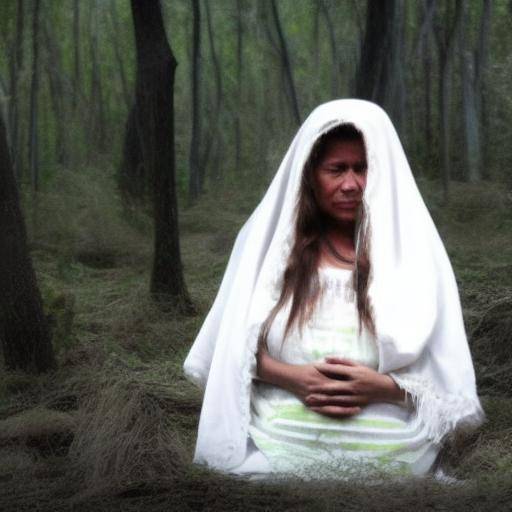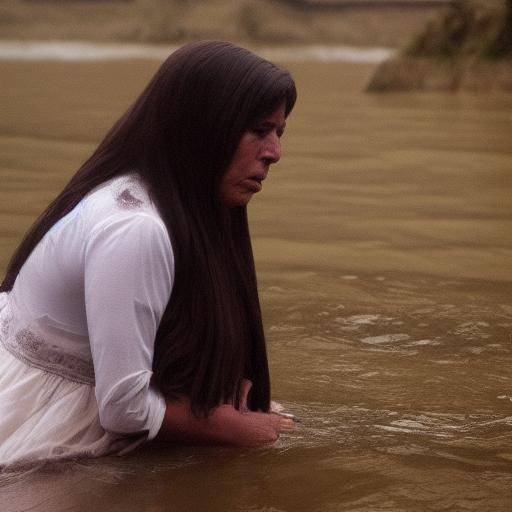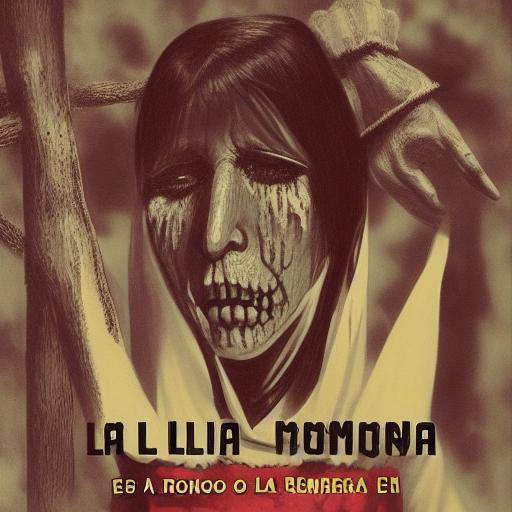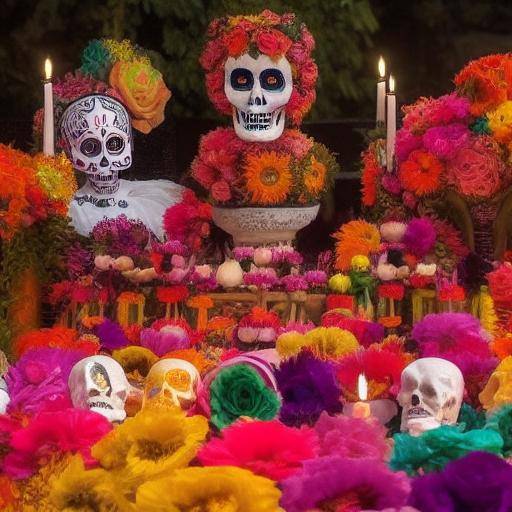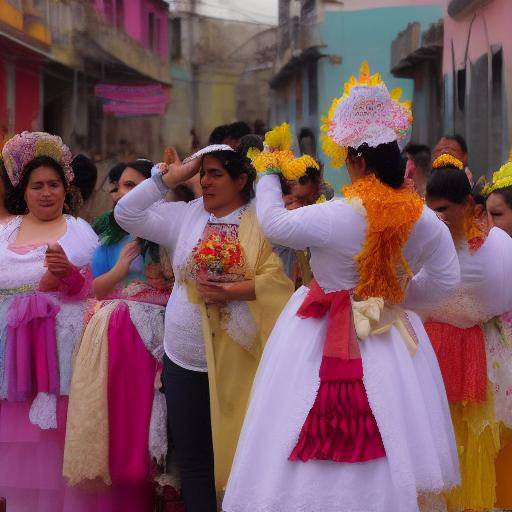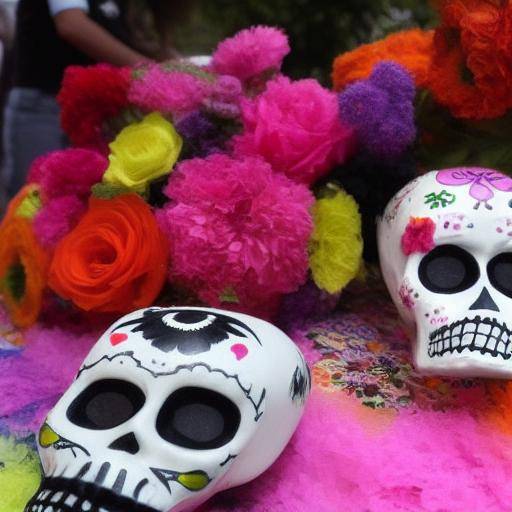
Introduction
La Llorona is an iconic figure in Mexican mythology, a woman whose tearing tears are heard at night, looking for her children she allegedly lost. This legend has endured over generations, transmitting from mouth to mouth, becoming an integral part of Mexican folklore. In this article, we will explore the fascinating history of La Llorona and its connection to the rivers of Mexico. In addition, we will examine how this legend has transcended cultural borders and still resonates in today's society.
History and Background
The legend of La Llorona has its roots at the time of the Spanish conquest in Mexico. It is believed that La Llorona was an indigenous woman who fell in love with a Spanish man, but this man abandoned her to learn that she was pregnant with him. tormented by despair and shame, the woman, in an act of despair, drowned her own children in a river.
The lament of La Llorona became a legend that was transmitted from generation to generation, with multiple variations suggesting its appearances in various scenarios. Each version of history maintains elements of divine punishment and redemption. The Llorona, with her incessant regret, seeks her lost children as a soul in sorrow.
This tragic story offers a fascinating window to the complexities and nuances of Mexican culture, providing a constant reminder of the dangers and fears that haunt daily life.
Analysis in Deep
The legend of La Llorona has evolved over time, adapting to changes in society and the collective mentality. Although the original history remains a pillar, its significance and relevance have varied in different historical and cultural contexts.
Today, La Llorona has become a warning symbol for children who venture near rivers and water bodies. Its tearing regret serves as a reminder of the dangers of neglecting precautions in aquatic environments.
Anthropological and sociological studies have explored the persistence of this legend in Mexican collective consciousness, analyzing its implications in terms of gender, power, and morality. The figure of La Llorona has been the subject of numerous interpretations that seek to unravel its psychological complexities and its impact on contemporary Mexican society.
Exhaustive examination
The presence of La Llorona in contemporary culture extends beyond Mexico's borders. Legend has transcended cultural barriers, being incorporated into literature, cinema, music, and other artistic manifestations. In this sense, La Llorona has become an icon that represents universal fears and repentance.
The pervival of La Llorona in the collective imagination emphasizes the importance of oral traditions in the transmission of intergenerational values and beliefs. The capacity of this legend to remain relevant over time reflects the lasting connection of society with its traditions and myths.
The presence of rivers in the narrative of La Llorona adds a symbolic dimension, associating water with life, but also with death and danger. These mythological and symbolic elements offer a wide range of interpretive and narrative possibilities that enrich the legacy of La Llorona in Mexican culture.
Comparative analysis
By comparing the legend of La Llorona with other mythological accounts of other cultures, we can appreciate significant similarities and differences. The figures of women in mourning, wandering and lamenting loss are recurrent in the various folk traditions. These parallels allow us to explore the universality of certain emotional and psychological issues that transcend cultural boundaries.
In the specific context of Mexico, rivers play a fundamental role in everyday life, mythology and national identity. The presence of rivers in the legend of La Llorona reflects the spiritual and cultural importance that these bodies of water have in the Mexican worldview. The rivers are intertwined with life and death, with hope and danger, and their symbolism is manifested in various cultural and artistic manifestations.
Practical Tips and Accessible Recommendations
If you ever find yourself near a river at night, listening to the soft murmur of the water, it is important to remember the necessary precautions, especially if you are accompanied by children or vulnerable people. Respecting and understanding the intricate relationship between culture, myths and nature can enrich our experience and understanding of the environment.
Perceptions of Industry and Expert Reviews
Hispanic American mythology and literature scholars have provided valuable insights into the relevance of La Llorona in Mexican culture. His analysis has illuminated the psychological and sociocultural complexity of the figure of La Llorona, enriching our understanding of its contemporary significance and relevance.
Case Studies and Real Life Applications
The impact of La Llorona goes beyond mere fiction. The moral teachings and lessons that this legend conveys are a source of cultural and social reflection. Through various contexts and applications, La Llorona has revealed its ability to influence the perception of the dangers and care that must be faced with aquatic spaces.
Future Trends and Predictions
As society evolves and attitudes change, it is likely that the figure of La Llorona will also experience transformations and reinterpretations. Its persistence as a cultural archetype suggests that it will continue to resonate in collective consciousness, adapting to the changing needs and sensitivities of future generations.
Conclusions
The legend of La Llorona, rooted in Mexican mythology and linked to the presence of the rivers, remains an emblematic element in Mexico's culture and identity. The impact of this legendary figure transcends the purely superstitious environment, giving symbolic and emotional meaning to the relationship between Mexican society and the aquatic environment.
More than a simple story of fear, La Llorona represents a vital link with cultural heritage, common fears, and constant warning about the potential dangers surrounding everyday life. Their persistence over time and their inclusion in various artistic manifestations attest to their lasting importance in the fabric of Mexican society. The Llorona, with her eternal lament, continues to be a beacon that guides and amazes us, reminding us of the complexity of human emotions and their expression through the mythical narrative.
Frequently asked questions
What is the origin of La Llorona?
The legend of La Llorona has its roots at the time of the Spanish conquest in Mexico, being transmitted mainly through oral traditions.
Why is La Llorona associated with rivers?
The association of La Llorona with the rivers reflects the symbolic and cultural importance that these bodies of water have in Mexican mythology and cosmovision.
What is the impact of La Llorona on popular culture?
The figure of La Llorona has transcended cultural barriers, being a source of inspiration for literature, cinema, music, and other artistic manifestations.
How has the interpretation of La Llorona evolved over time?
The interpretation of La Llorona has experienced multiple transformations in different historical and cultural contexts, adapting to the changing sensitivities of society.
What is the moral lesson or message transmitted by La Llorona?
The legend of La Llorona conveys messages about the importance of parental responsibility, the care of children, and the impact of desperate decisions.
What teachings does the legend of La Llorona provide in relation to security near rivers?
The legend of La Llorona serves as a warning about the potential dangers surrounding the aquatic environments, emphasizing the importance of caution and care in such places.
Is there tangible evidence to support the existence of La Llorona?
The legend of La Llorona is rooted in folklore and oral tradition, which places it in the field of mythological and symbolic rather than historical or scientific.
These questions and answers provide a complete overview of La Llorona, its connection to the rivers in Mexico, and its impact on culture and society. In deepening into this mythical legend, we appreciate its importance as a link between the past and the present, between superstition and reflection, and between the human and the supernatural. The incessant struggle of La Llorona to find her lost children remains an inextinguishable echo in Mexican folklore, reminding us of the emotional and spiritual nuances that define our understanding of the world.
In conclusion, La Llorona is much more than a ghost looking for her children. His regret, intertwined with the presence of the Mexican rivers, is a testimony of the wealth and complexity of the cultural heritage, the mythical imagery and the continuity of traditions in contemporary society. Llorona endures as a symbol of the emotional and psychological complexities that transcend time and space, reminding us of the depth of human condition.
With the guarantee of the perennial validity of La Llorona in the cultural fabric of Mexico and beyond, we say goodbye with deep appreciation for the richness of its history and its lasting impact.
External links of interest:
- Information about La Llorona and its cultural impact
- The rivers of Mexico and its historical importance
- Article on Latin American myths
Note: This article has been prepared with the aim of providing an overview of the legend of La Llorona and its connection to the rivers of Mexico. Its purpose is informative and cultural and does not intend to validate or refute the veracity of popular beliefs or traditional myths.

